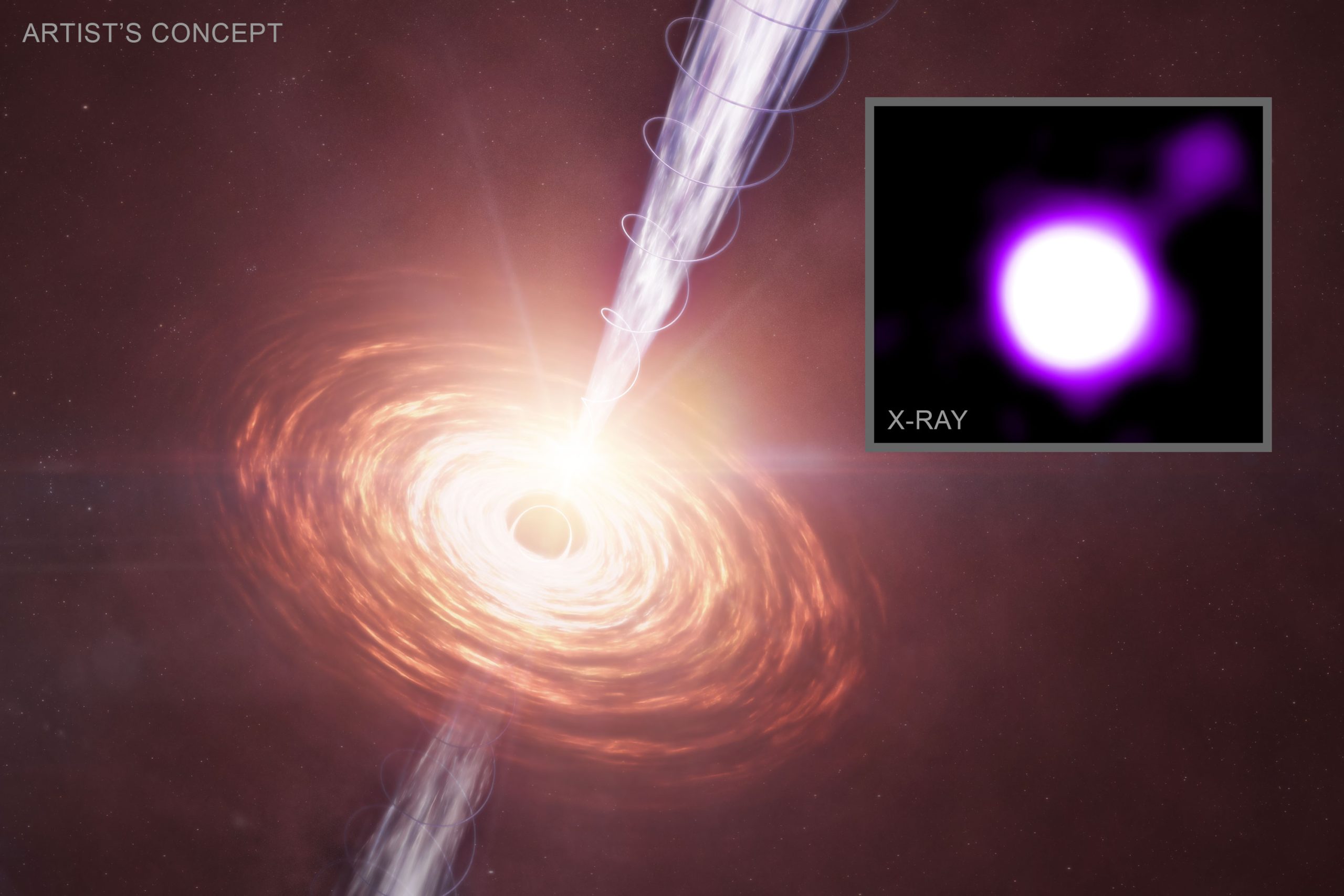A rare look at the early Universe, powered by ancient light
NASA has found something amazing: a black hole jet from over 11 billion years ago. This powerful stream of energy formed just 2 billion years after the Big Bang. It still glows today, thanks to leftover radiation from the Universe’s birth.
A Jet From the Dawn of Time
NASA’s Chandra X-ray Observatory helped scientists study a distant quasar. Its name is PJ352-15, and it sits 11 billion light-years away. At its center is a supermassive black hole that once shot out strong jets of energy.
One of these jets still shines in X-rays. But it’s not active anymore. It glows because it is lit up by ancient light from the Big Bang.
How the Big Bang Lights Up the Jet
The Cosmic Microwave Background plays a big role
The jet’s glow comes from the Cosmic Microwave Background (CMB). The CMB is weak today, but it was much brighter billions of years ago. When the jet’s particles hit this light, they created X-rays.
This effect is called inverse Compton scattering
Fast-moving particles in the jet gave energy to the CMB’s photons. This boosted them into the X-ray range. Modern telescopes can now detect these X-rays.
Why This Discovery Matters
This is the most distant X-ray jet ever found. It shows that X-ray telescopes like Chandra can look very far into space and time.
It also helps scientists learn how black holes and galaxies grew in the early Universe. The fact that the Big Bang’s light still powers parts of space is truly exciting.
“We’re seeing a black hole jet in the early Universe interacting with the Big Bang’s heat,” said NASA’s Thomas Connor. “It connects the very young and the very old Universe.”
What Other Ancient Lights Are Still Glowing?
As telescopes get better, we may find even more relics like this. The Universe still holds many secrets — and some of them may be shining with the light of the Big Bang.
Reference: “Investigating the Emission Mechanism in the Spatially Resolved Jets of Two z ≈ 3 Radio-loud Quasars” by Jaya Maithil, Daniel A. Schwartz, Aneta Siemiginowska, Preeti Kharb, Diana M. Worrall, John F. C. Wardle, Giulia Migliori, Chi C. Cheung, Bradford Snios, Doug B. Gobeille, Herman L. Marshall and Mark Birkinshaw, 9 June 2025, The Astrophysical Journal.
DOI: 10.3847/1538-4357/adccc1
Daily science news 2025, Best science blogs 2025, New science research 2025, Popular science articles, Latest science news 2025










